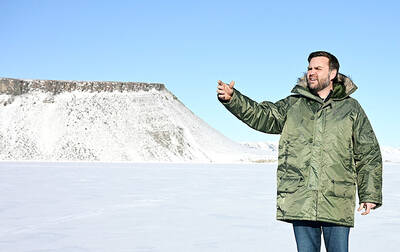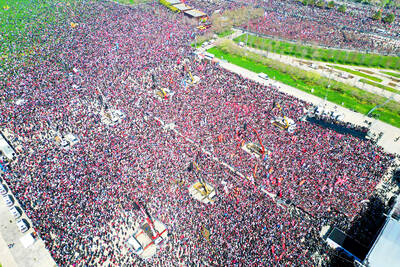In the decades after World War II, the CIA and other US agencies employed at least a 1,000 Nazis as Cold War spies and informants and, as recently as the 1990s, concealed the government’s ties to some still living in the US, newly disclosed records and interviews show.
At the height of the Cold War in the 1950s, law enforcement and intelligence leaders like J. Edgar Hoover at the FBI and Allen Dulles at the CIA aggressively recruited onetime Nazis of all ranks as secret, anti-Soviet “assets,” declassified records show. They believed the ex-Nazis’ intelligence value against the Russians outweighed what one official called “moral lapses” in their service to the Third Reich.
The agency hired one former SS officer as a spy in the 1950s, for instance, even after concluding he was probably guilty of “minor war crimes.”
And in 1994, a lawyer with the CIA pressured prosecutors to drop an investigation of an ex-spy outside Boston implicated in the Nazis’ massacre of tens of thousands of Jews in Lithuania, according to a government official.
Evidence of the government’s links to Nazi spies began emerging publicly in the 1970s. But thousands of records from declassified files, Freedom of Information Act requests and other sources, together with interviews with scores of current and former government officials, show that the government’s recruitment of Nazis ran far deeper than previously known and that officials sought to conceal those ties for at least a half-century after the war.
In 1980, FBI officials refused to tell even the Department of Justice’s own Nazi hunters what they knew about 16 suspected Nazis living in the US.
The bureau balked at a request from prosecutors for internal records on the Nazi suspects, memos show, because the 16 men had all worked as FBI informants, providing leads on communist “sympathizers.” Five of the men were still active informants.
Refusing to turn over the records, a bureau official in a memo stressed the need for “protecting the confidentiality of such sources of information to the fullest possible extent.”
Some spies for the US had worked at the highest levels for the Nazis. SS officer Otto von Bolschwing was a mentor and top aide to Adolf Eichmann, architect of the “Final Solution,” and wrote policy papers on how to terrorize Jews.
Yet after the war, the CIA not only hired him as a spy in Europe, but relocated him and his family to New York City in 1954, records show. The move was seen as a “a reward for his loyal postwar service and in view of the innocuousness of his [Nazi] party activities,” the agency wrote.
His son, Gus von Bolschwing — who learned many years later of his father’s ties to the Nazis — sees the relationship between the spy agency and his father as one of mutual convenience forged by the Cold War.
“They used him, and he used them,” Gus von Bolschwing, now 75, said in an interview. “It shouldn’t have happened. He never should have been admitted to the United States. It wasn’t consistent with our values as a country.”
When Israeli agents captured Eichmann in Argentina in 1960, Otto von Bolschwing went to the CIA for help because he worried they might come after him, memos show.
Agency officials were worried as well that von Bolschwing might be named as Eichmann’s “collaborator and fellow conspirator and that the resulting publicity may prove embarrassing to the US,” a CIA official wrote.
After two agents met with von Bolschwing in 1961, the agency assured him that it would not disclose his ties to Eichmann, records show. He lived freely for another 20 years before prosecutors discovered his wartime role and prosecuted him. He agreed to give up his citizenship in 1981, dying months later.
In all, the US military, the CIA, the FBI and other agencies used at least 1,000 ex-Nazis and collaborators as spies and informants after the war, according to Richard Breitman, a Holocaust scholar at American University in Washington who was on a government-appointed team that declassified war-crime records.
None of the spies are known to be alive today.
The wide use of Nazi spies grew out of a Cold War mentality shared by two titans of intelligence in the 1950s: Hoover, the longtime FBI director, and Dulles, the CIA director.
Dulles believed “moderate” Nazis might “be useful” to the US, records show. Hoover, for his part, personally approved some ex-Nazis as informants and dismissed accusations of their wartime atrocities as Soviet propaganda.
The Nazi spies performed a range of tasks for US agencies in the 1950s and 1960s, from the hazardous to the trivial, the documents show.
In Maryland, Army officials trained several Nazi officers in paramilitary warfare for a possible invasion of Russia. In Connecticut, the CIA used an ex-Nazi guard to study Soviet-bloc postage stamps for hidden meanings.
In Virginia, a top adviser to Adolf Hitler gave classified briefings on Soviet affairs. And in Germany, SS officers infiltrated Russian-controlled zones, laying surveillance cables and monitoring trains.
However, many Nazi spies proved inept or worse, declassified security reviews show. Some were deemed habitual liars, confidence men or embezzlers, and a few even turned out to be Soviet double agents, the records show.
Breitman said the morality of recruiting ex-Nazis was rarely considered.
“This all stemmed from a kind of panic, a fear that the communists were terribly powerful and we had so few assets,” he said.

A fire caused by a burst gas pipe yesterday spread to several homes and sent a fireball soaring into the sky outside Malaysia’s largest city, injuring more than 100 people. The towering inferno near a gas station in Putra Heights outside Kuala Lumpur was visible for kilometers and lasted for several hours. It happened during a public holiday as Muslims, who are the majority in Malaysia, celebrate the second day of Eid al-Fitr. National oil company Petronas said the fire started at one of its gas pipelines at 8:10am and the affected pipeline was later isolated. Disaster management officials said shutting the

US Vice President J.D. Vance on Friday accused Denmark of not having done enough to protect Greenland, when he visited the strategically placed and resource-rich Danish territory coveted by US President Donald Trump. Vance made his comment during a trip to the Pituffik Space Base in northwestern Greenland, a visit viewed by Copenhagen and Nuuk as a provocation. “Our message to Denmark is very simple: You have not done a good job by the people of Greenland,” Vance told a news conference. “You have under-invested in the people of Greenland, and you have under-invested in the security architecture of this

UNREST: The authorities in Turkey arrested 13 Turkish journalists in five days, deported a BBC correspondent and on Thursday arrested a reporter from Sweden Waving flags and chanting slogans, many hundreds of thousands of anti-government demonstrators on Saturday rallied in Istanbul, Turkey, in defence of democracy after the arrest of Istanbul Mayor Ekrem Imamoglu which sparked Turkey’s worst street unrest in more than a decade. Under a cloudless blue sky, vast crowds gathered in Maltepe on the Asian side of Turkey’s biggest city on the eve of the Eid al-Fitr celebration which started yesterday, marking the end of Ramadan. Ozgur Ozel, chairman of the main opposition Republican People’s Party (CHP), which organized the rally, said there were 2.2 million people in the crowd, but

JOINT EFFORTS: The three countries have been strengthening an alliance and pressing efforts to bolster deterrence against Beijing’s assertiveness in the South China Sea The US, Japan and the Philippines on Friday staged joint naval drills to boost crisis readiness off a disputed South China Sea shoal as a Chinese military ship kept watch from a distance. The Chinese frigate attempted to get closer to the waters, where the warships and aircraft from the three allied countries were undertaking maneuvers off the Scarborough Shoal — also known as Huangyan Island (黃岩島) and claimed by Taiwan and China — in an unsettling moment but it was warned by a Philippine frigate by radio and kept away. “There was a time when they attempted to maneuver